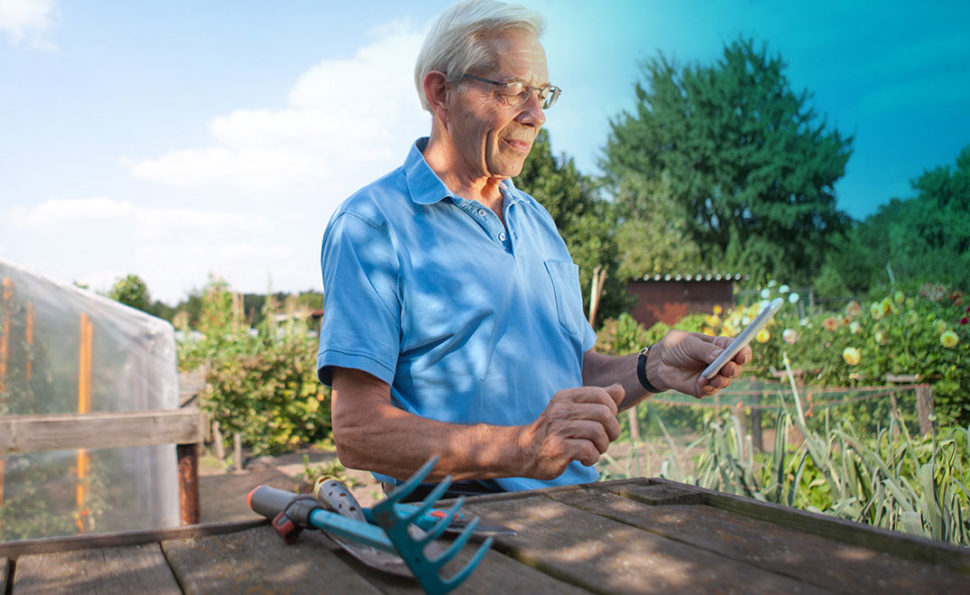Nowadays, for the first time, more than half of older adults are online – and studies have shown that this goes beyond just buying a computer, setting it up and surfing the web every once in a while: older adults are actually integrating technology into their everyday lives. A paper that was recently published by digital health company Care Innovations takes an extensive look at older adults’ attitudes toward technology and online health. Furthermore, it discusses the importance of designing technology that understands older adults’ unique needs, preferences, capabilities and limitations – like our Gociety Solutions.
It’s a common misconception: older adults tend to reject technology, and refuse to integrate it into their daily lives. Recent studies show that quite the opposite is true: older adults are actually connecting with technology more than ever. Seventy percent of older adults use the Internet on a typical day, and forty percent of older adults (who were interviewed by the AARP) stated that they consider themselves ‘extremely or very comfortable’ using the Internet. What’s more: a poll conducted by Harris Interactive found that older adults actually make up the highest percentage of tablet and e-reader owners.
The paper goes on to discuss the overwhelming ease with which today’s baby boomers use technology for everything, from entertainment and news to banking and social networking – and online health services. They are 98% more likely than the average user to visit health websites, and are increasingly exposed to health services at work. It can reasonably be assumed thus, the paper states, that this group will carry their experiences with technology into their senior years, especially in relation to health care.
Conclusion: older adults do not just accept technology; they are actually taking the next step of integrating it fully into their lives, on a daily basis. The question that remains, therefore, is not a question of how to convince older adults of the general benefits of technology, but rather: ‘how to make technology more well-adapted to the wishes and needs of older adults?’ – which is exactly the question we have been trying to answer in recent years.
To answer this question we have turned to the people who are – by far – most likely to provide us with the correct answer: older adults themselves. All of our developments, whether software or hardware, are extensively tried out, felt and investigated by a test panel consisting of the very people we are trying to help. Based on the recommendations that come out of these try-outs, we adjust our technology again – and again, and again – for as many times as is necessary; until we can be absolutely sure that our products fit the needs and wishes of our users as well as they could.
In this way we concretize and give substance to one of our main missions: to humanize technology. In other words: to change health care technology from its predominantly cold, stigmatising and impersonal form to one that is both accessible and personalised – and well-adapted to the needs of actual flesh-and-blood human beings.




